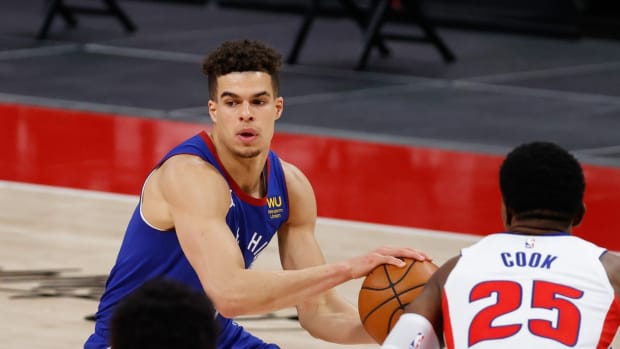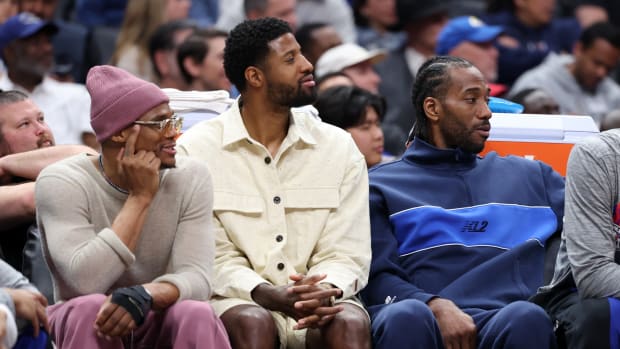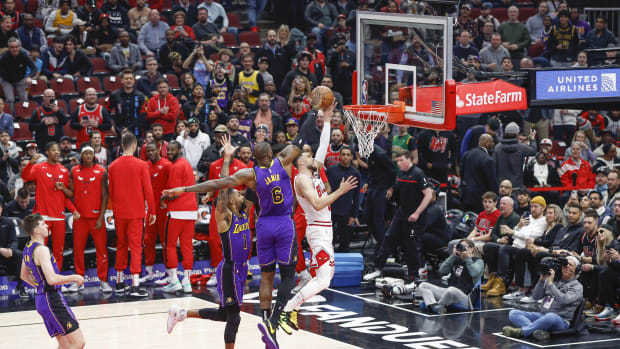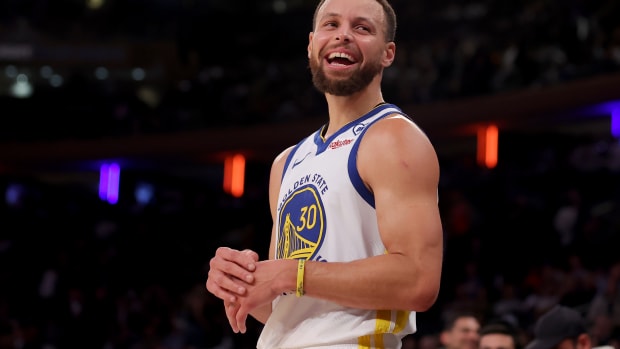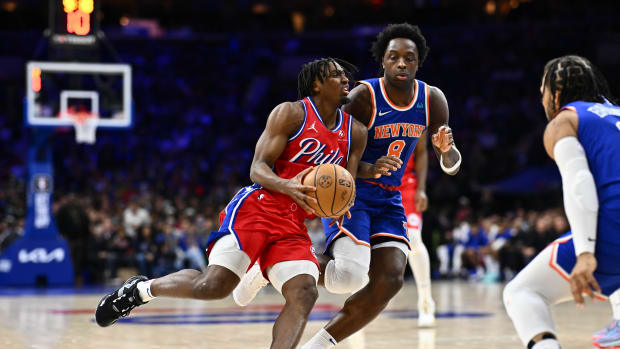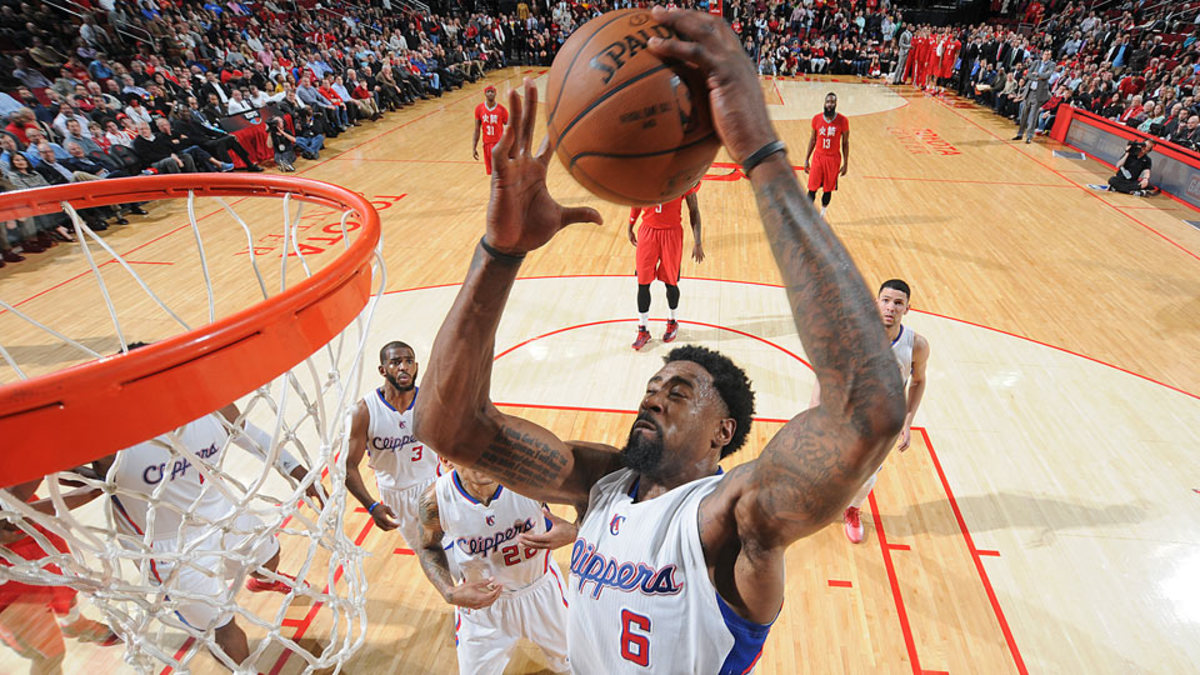
DeAndre Jordan flourishing in Blake's absence, but can the Clips keep him?
When Chris Paul was sidelined last season with a shoulder injury, he eventually returned to a Clippers team with a blossoming new star.
In the 18 games Paul missed, Blake Griffin took his game to new heights. He bullied defenders on the block, refined his midrange game and carried a Clippers team missing its leader and starting point guard. Griffin’s leap earned him a third-place finish in MVP voting and put him in the conversation for best big man in the league.
This year, it's been Griffin who has been sidelined after undergoing surgery due to a staph infection in his elbow. In his absence, it hasn’t just been Paul keeping the team afloat with his usual display of gritty defense and timely offensive brilliance.
It’s also been Griffin’s frontcourt mate: DeAndre Jordan.
Jordan has been praised for his raw athleticism ever since he came into the league. Once the Clippers added Paul and head coach Doc Rivers, Jordan went from project with potential to a rim-rocking, shot-blocking monster capable of dunking through grown men or swatting shots into the second row.
Due to a combination of increased urgency and more room to maneuver in the paint, Jordan has been a devastating force the last few weeks. Since Feb. 9, the day of Griffin’s surgery, Jordan is averaging an NBA-best 20.2 rebounds per game, more than seven boards higher than anyone else who has played multiple games is averaging over that span. And while his free-throw shooting remains to be a big issue, he’s put up 16.7 points per night since Griffin went down, an increase of nearly six points from his season average (11.2).
Give and Go: Race for No. 8 out West, Rondo's issues, Bulls' outlook, more
Jordan gets most of his points off simple actions—pick-and-rolls with Paul, offensive rebounds and duck-ins to the paint. He’s not a center who sets up in the post and commands double teams, but that makes him a perfect fit for the Clippers’ offense, particularly with its main rim-diver on the bench. Jordan’s ascension hasn’t just been pleasant to watch—it’s been needed.
The Clippers looked to be in serious trouble once Griffin went down. With an already thin frontcourt, Los Angeles has been buoyed by Jordan’s brilliance. And made up for a subpar cast of big men coming off the bench.
On Feb. 8, in their first game without Griffin, the Clippers were blown out in Oklahoma City. Of their next nine games, seven were scheduled against current playoff teams, including two matchups each against Memphis and Houston, both ahead of L.A. in the West.
But as Jordan heated up, so too did the Clippers. L.A. responded to the nine-game gauntlet with a 7-2 record, splitting with the Grizzlies and Rockets, but scoring important wins over Dallas, San Antonio and Chicago.
Los Angeles is frightfully thin for team that believes it’s a contender. The Clippers are particularly reliant on their starting five because of that lack of depth. In order for L.A. to make noise in the playoffs, it’ll need Jordan to continue to play at the elite level he’s achieved while Griffin has been out.
The short-term issue of depth could also soon become a long-term one.
Jordan will likely command a max contract when he becomes an unrestricted free agent this summer, forcing the Clippers to choose between keeping their core intact or filling out their roster.
The Craft: Dante Exum’s development
Is Jordan deserving of the max? Not only could a deal for him this summer be considered a bargain once the cap takes its TV revenue jump in 2016, but Jordan is a steadily improving player who will turn just 27 this summer.
The 2015-2016 salary cap is estimated to be around $66.3 million, which means a Clippers max for Jordan, who is completing his seventh season in the league, would start close to $19.9 million, and end in a deal in the neighborhood of five years, $103.5 million.
Teams with cap space, perhaps the Lakers or Knicks, could offer Jordan a four-year deal with smaller yearly raises.
The Clippers already have over $54 million committed to just five players next season, and would be over $63.3 million if they brought back Jamal Crawford and Matt Barnes, currently two of L.A.’s most important rotation players.
A max for Jordan puts the Clippers into the luxury tax, on track for the repeater penalty and severely harms the team’s ability to put together a good roster in the future.
In any scenario, the Clippers are limited in the ways they can improve their team.
If they strive to stay below the tax apron, they’ll continue to have to rely on veterans playing on minimum contracts, which will likely also prolong their depth problems.
It’s a conundrum for which the Clippers only have themselves to blame. Los Angeles can’t afford to lose Jordan—particularly the recent version of him—yet going over the tax apron to pay Jordan severely restricts their ability to sign good players.
Rivers takes much of the blame for that issue. His whiffing on trades and failing to fill out the roster means Steve Ballmer’s deep pockets will mean nothing if eight Clippers are making over $80 million and Rivers can only offer someone the mini mid-level.
Los Angeles has yet to crack the glass ceiling in the ultra-competitive West, and in an effort to improve the balance of the roster, Rivers’ mismanagement could cost the Clippers their promising young center.






























